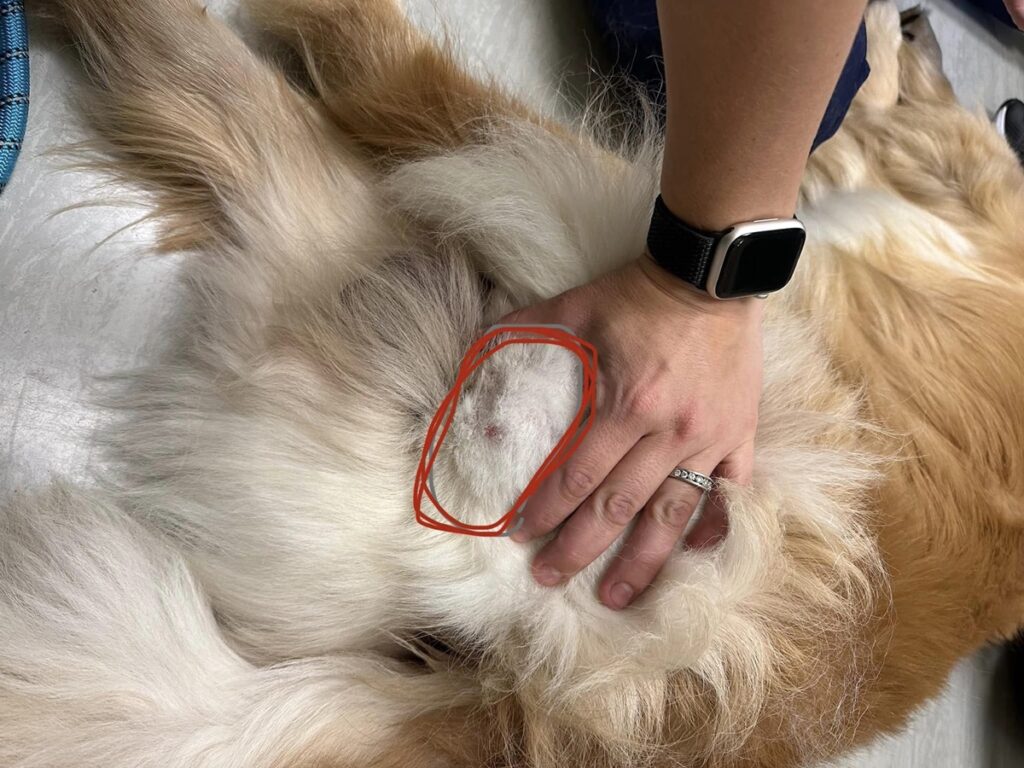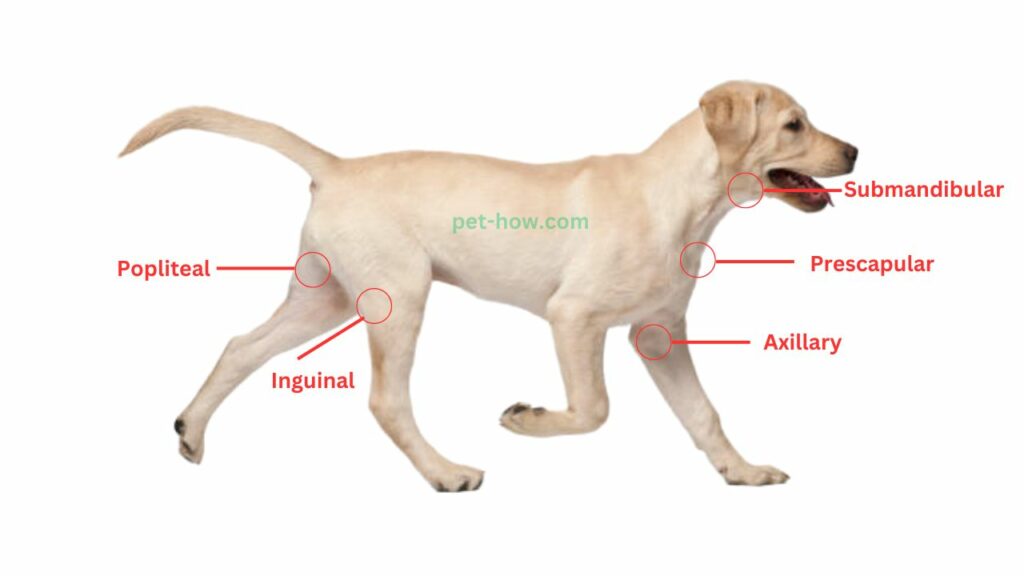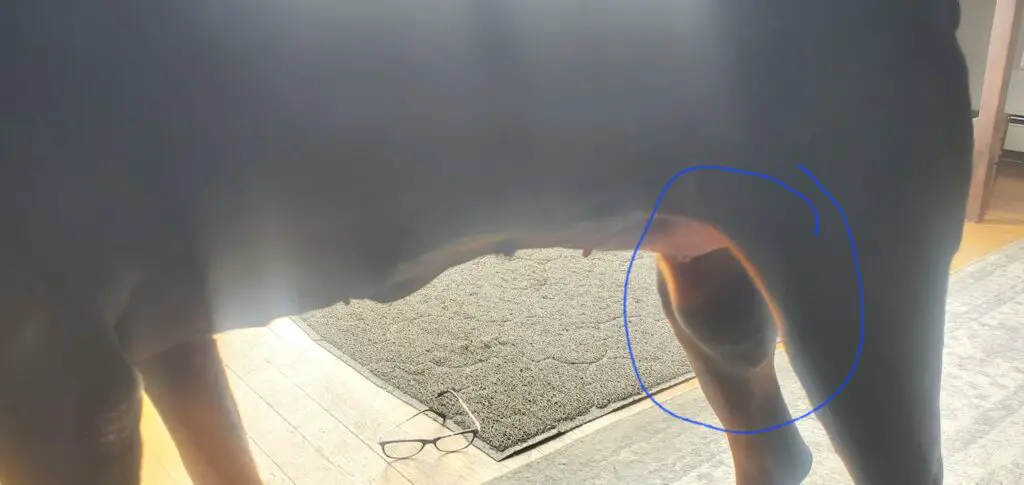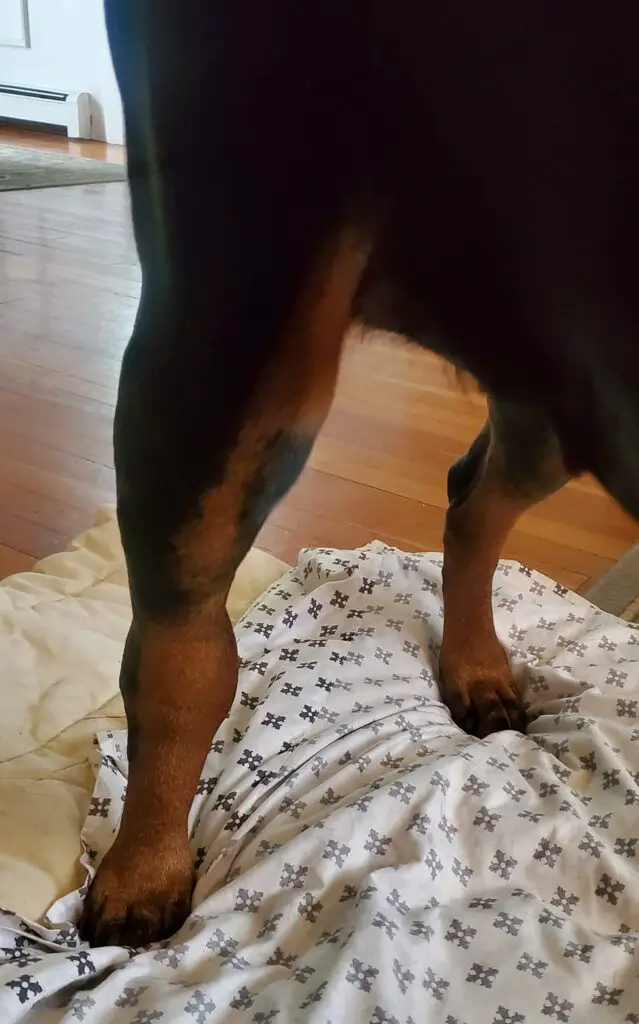Inguinal Lymph Nodes in dogs play a crucial role in the canine immune system.
These nodes can become enlarged or swollen due to several causes, including bacterial, tick-borne, fungal, and parasitic infections.
Other culprits could be autoimmune diseases like lupus, immune-mediated hemolytic anemia (IMHA), and polyarthritis.
More concerningly, swollen lymph nodes may also indicate the presence of cancer, such as lymphoma, a common type of cancer in dogs.
- Key Takeaway
- Purpose of Inguinal Lymph Nodes In Dogs
- How Do Swollen Inguinal Lymph Nodes Affect The Dog’s Body?
- Causes of Inguinal Lymph Nodes In Dogs
- Symptoms of Inguinal Lymph Nodes In Dogs
- Diagnosis of Inguinal Lymph Nodes In Dogs
- Treatment For Inguinal Lymph Nodes In Dogs
- FAQs
- Q: What causes inguinal lymph nodes to swell in dogs?
- Q: How are swollen inguinal lymph nodes in dogs diagnosed?
- Q: What are the treatment options for swollen inguinal lymph nodes in dogs?
- Q: Can inguinal lymph nodes in dogs be a sign of cancer?
- Q: Are swollen inguinal lymph nodes in dogs something to be concerned about?
- Q: Where are the inguinal lymph nodes located in dogs?
- Q: What are the symptoms of swollen inguinal lymph nodes in dogs?
- Q: Can older dogs have swollen inguinal lymph nodes?
- Q: Can swollen inguinal lymph nodes in dogs be treated with medication alone?
- In Conclusion
Key Takeaway
- The purpose of inguinal lymph nodes in dogs is to filter harmful substances and pathogens from the body, primarily serving regions such as the lower abdomen, buttocks, and legs.
- Swollen inguinal lymph nodes in dogs can lead to discomfort, mobility issues, and systemic symptoms like lethargy and loss of appetite, often indicating an underlying issue such as infection or disease that is affecting the dog’s overall health.
- The swelling of inguinal lymph nodes in dogs can be caused by various factors including infections, autoimmune diseases, or more serious conditions like cancer.
Purpose of Inguinal Lymph Nodes In Dogs

The inguinal lymph nodes in dogs serve an important role in the lymphatic system.
They are located in the groin area and act as a relay point for lymphatic drainage from the lower limb, as well as filtering the lymphatic drainage originating from the groin, penile, vulvar, and rectal areas.
When the dog’s body is invaded by viruses or bacteria, or the dog has a disease that triggers an immune response, the lymph nodes work to fight off these invaders, which can result in their enlargement.
Additionally, the deep inguinal lymph node drains some of the lymph vessels ascending in the femoral canal.
In the absence of this node, the vessels would not be drained properly. Thus, these nodes play a crucial role in maintaining the health of your pet.
See also: Popliteal Lymph Nodes In Dogs – Causes, Symptoms, and Treatment
How Do Swollen Inguinal Lymph Nodes Affect The Dog’s Body?

Swollen inguinal lymph nodes in dogs can indicate various health issues, including infections or diseases.
The swelling typically occurs due to an immune response to bacteria, viruses, tick-borne pathogens, fungi, and parasites. This enlargement is a sign that the dog’s body is fighting off these invaders.
In some cases, swollen lymph nodes could indicate more serious conditions such as lymphoma, where the first sign is often the swelling of lymph nodes in various areas including the groin.
Other causes could include allergies, which can lead to swollen lymph nodes in dogs.
While swollen lymph nodes themselves are not usually painful, if they become infected, they can cause discomfort for the dog. It’s crucial to have swollen lymph nodes examined by a veterinarian, as they could indicate a more serious underlying disease or infection.
See also: Sublumbar Lymph Nodes In Dogs: Causes, Symptoms, and Treatment
Causes of Enlarged Inguinal Lymph Nodes In Dogs

Inguinal lymph nodes in dogs can swell due to several reasons:
- Infectious Causes: There are various possible infectious causes of enlarged lymph nodes, including bacterial, tick-borne, fungal, and parasitic infections. Dogs with these infections often display other symptoms such as fever, lethargy, or diarrhea.
- Autoimmune Diseases: Immune-mediated diseases like lupus, immune-mediated hemolytic anemia (IMHA), and polyarthritis can cause lymphadenopathy.
- Cancer: Cancerous tumors can cause lymphadenopathy in dogs. Lymphoma, a cancer of the lymphatic system, is a common cause of swollen lymph nodes in dogs.
- Hernias: A hernia occurs when one tissue or organ protrudes through another into an abnormal place on the body, often causing a lump or bump.
- Local Infections: Local respiratory infections or dental diseases can cause the submandibular lymph nodes to enlarge.
- Bacterial and Fungal Infections: These infections in dogs can cause lymph nodes to enlarge in one part of the body or in several, depending on how widespread the infection is.
See also: Can Dog Lymph Nodes Be Removed?
Symptoms of Enlarged Inguinal Lymph Nodes In Dogs

Symptoms of Inguinal Nodes in Dogs include:
- Trouble defecating
- Nausea and general malaise
- Enlarged lymph nodes that can be felt or seen under the skin
- Discomfort when touched
- Nausea or lack of appetite
- Vomiting
- Difficulty swallowing, eating, or breathing
- Swelling (palpable, firm nodes) in one of the multiple areas
- Skin rash, irritation, or injury near the genitals or lower body
See also: Can Dogs Live Without Lymph Nodes?
Diagnosis of Enlarged Inguinal Lymph Nodes In Dogs
- Physical Examination: The vet will likely start with a thorough physical examination of your dog, paying close attention to the area around the groin and other areas where lymph nodes are present.
- History and Symptoms: The vet will take a detailed history of your dog’s health and ask about any symptoms your dog has been experiencing. This can help identify potential causes of lymph node swelling.
- Blood Tests: Blood tests can help determine if there is an infection or other disease that could be causing the lymph node swelling. These may include a complete blood count (CBC), biochemical profile, and blood smear.
- Fine Needle Aspiration (FNA): This is a procedure where a small needle is used to extract cells from the swollen lymph node. These cells are then examined under a microscope to check for signs of infection, cancer, or other issues.
- Biopsy: In some cases, a biopsy may be required. This involves surgically removing a portion of the swollen lymph node for further examination under a microscope.
- Imaging: X-rays or ultrasound may be used to look for tumors or other abnormalities in the body that could be causing the lymph node swelling.
- Other Tests: Depending on the suspected cause, other tests may be performed, such as tests for specific infections or diseases.
Treatment For Enlarged Inguinal Lymph Nodes In Dogs
Treatment for inguinal nodes in dogs includes:
Step 1: Visit the Veterinarian
The first step if you suspect your dog has swollen inguinal lymph nodes is to visit a veterinarian. They can conduct a physical examination and determine if the lymph nodes are indeed enlarged.
Step 2: Undergo Diagnostic Tests
The vet may recommend various diagnostic tests to identify the cause of the swelling. These could include blood tests, fine-needle aspiration, biopsy, or imaging tests like X-rays or ultrasound.
Step 3: Identify the Cause
Once the tests are done, the vet will analyze the results to identify the cause. This could be an infection, cancer, autoimmune disease, or other medical conditions.
Step 4: Develop a Treatment Plan
Based on the diagnosis, the vet will develop a treatment plan tailored to your dog’s needs. This could involve medication, surgery, or other treatments.
Step 5: Administer Treatment
The next step is to administer the prescribed treatment. This could involve giving your dog medication, undergoing surgery, or implementing lifestyle changes.
Step 6: Monitor Your Dog’s Condition
After treatment begins, it’s important to closely monitor your dog’s condition. If you notice any changes in their behavior or symptoms, contact your vet immediately.
Step 7: Follow-Up Visits
Regular follow-up visits to the vet are crucial to ensure the treatment is working and adjust the plan if necessary. During these visits, the vet may perform additional tests to check on your dog’s progress.
See also: 9 Causes Of Swollen Lymph Nodes In Dogs
FAQs
Q: What causes inguinal lymph nodes to swell in dogs?
A: Swollen inguinal nodes in dogs can be caused by various factors, including infections, inflammation, cancer, or other underlying health conditions.
Q: How are swollen inguinal lymph nodes in dogs diagnosed?
A: To diagnose swollen inguinal nodes in dogs, a veterinarian may perform a physical examination, palpation of the lymph nodes, and may also recommend additional tests such as a biopsy or lymph node aspirate.
Q: What are the treatment options for swollen inguinal lymph nodes in dogs?
A: The treatment for swollen inguinal nodes in dogs depends on the underlying cause. It may include medications, antibiotics, anti-inflammatory drugs, chemotherapy, or surgical intervention, as recommended by a veterinarian.
Q: Can inguinal lymph nodes in dogs be a sign of cancer?
A: Swollen inguinal nodes in dogs can be a symptom of various types of cancer, including lymphoma. Proper diagnosis and further tests are necessary to determine the cause.
Q: Are swollen inguinal lymph nodes in dogs something to be concerned about?
A: Swollen inguinal nodes in dogs can be a normal response to infection or inflammation, but they can also indicate a more serious underlying condition. It is advisable to consult a veterinarian for proper evaluation and guidance.
Q: Where are the inguinal lymph nodes located in dogs?
A: The inguinal nodes in dogs are located in the groin area, near the hind legs.
Q: What are the symptoms of swollen inguinal lymph nodes in dogs?
A: Symptoms of swollen inguinal nodes in dogs may include enlarged lymph nodes that are palpable, pain or discomfort in the groin area, limping, or other signs of underlying illness.
Q: Can older dogs have swollen inguinal lymph nodes?
A: Yes, older dogs can have swollen inguinal lymph nodes just like any other age group. The cause should be investigated by a veterinarian to determine the underlying condition.
Q: Can swollen inguinal nodes in dogs be treated with medication alone?
A: The treatment for swollen inguinal nodes in dogs depends on the underlying cause. While medication may be part of the treatment plan, it is essential to address the root cause for proper management.
In Conclusion
In conclusion, inguinal nodes in dogs play a crucial part in their immune system, and their swelling could indicate various health issues.
The reasons for this can range from bacterial, tick-borne, fungal, and parasitic infections to autoimmune diseases such as lupus, immune-mediated hemolytic anemia (IMHA), and polyarthritis.
Alarmingly, it could also be a sign of cancer, particularly lymphoma, which is common in dogs.





Leave a Reply